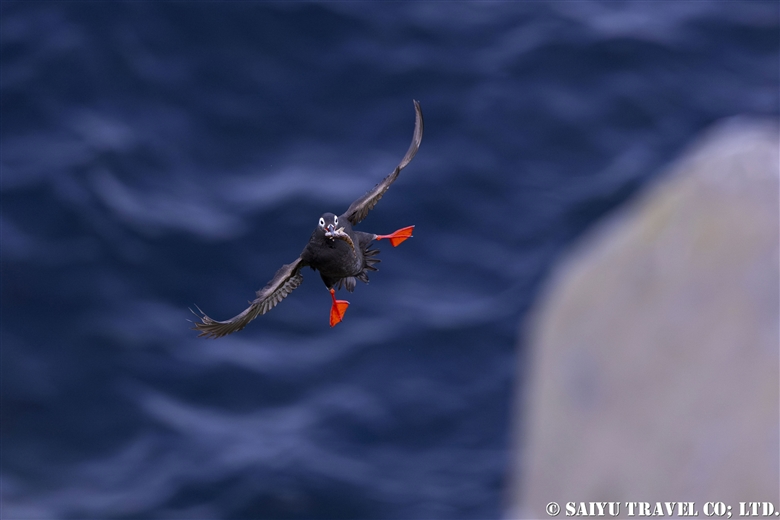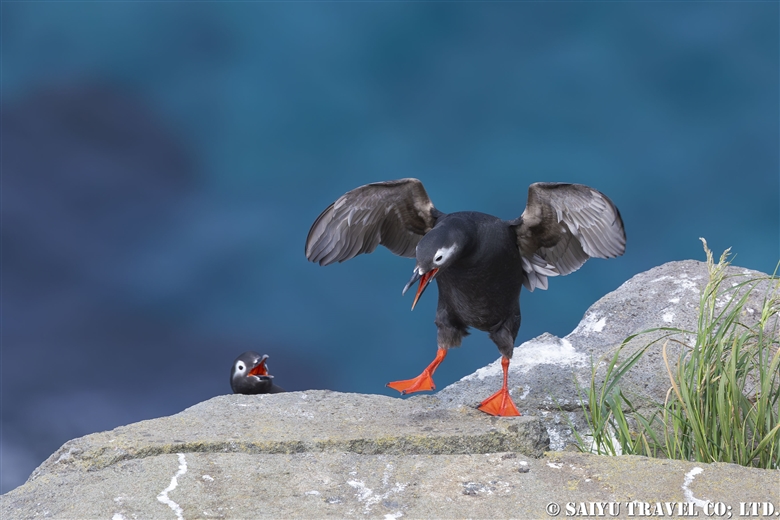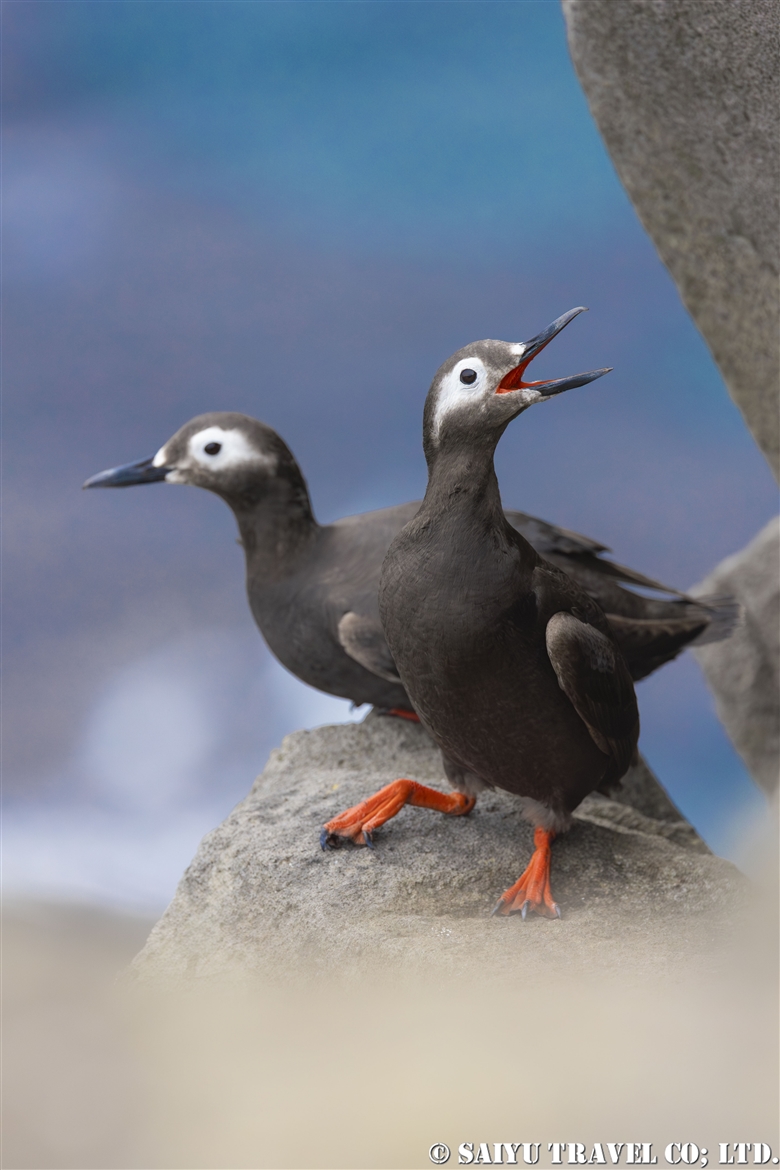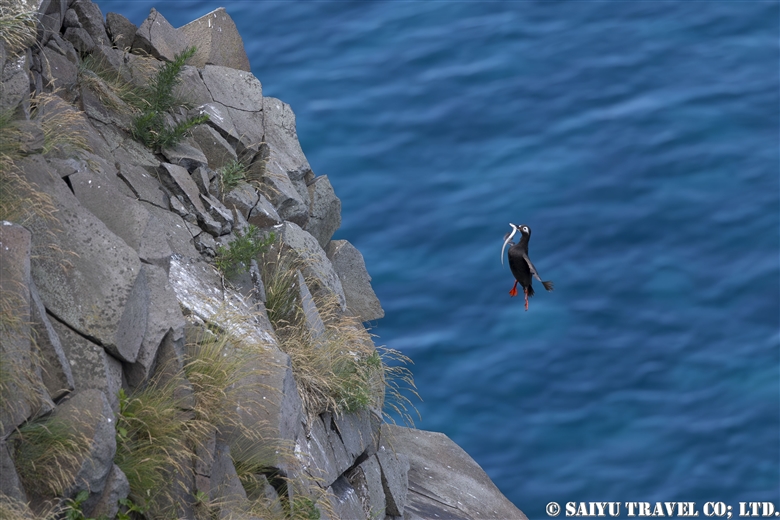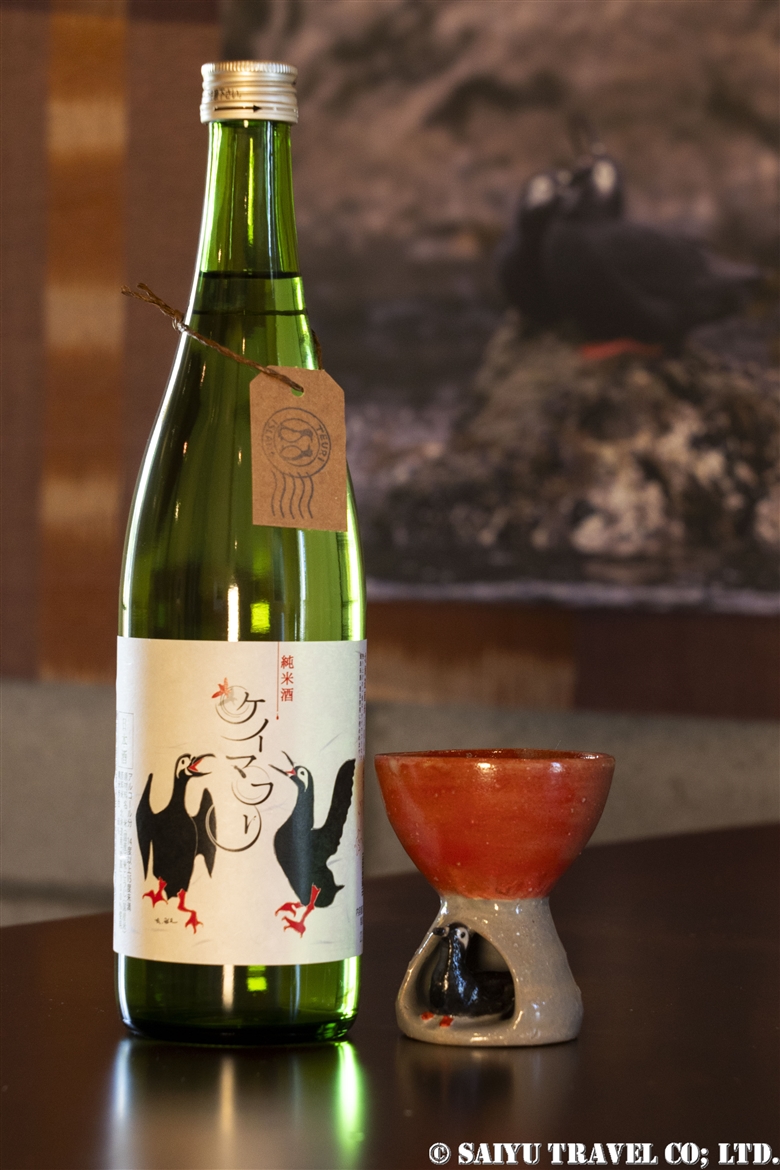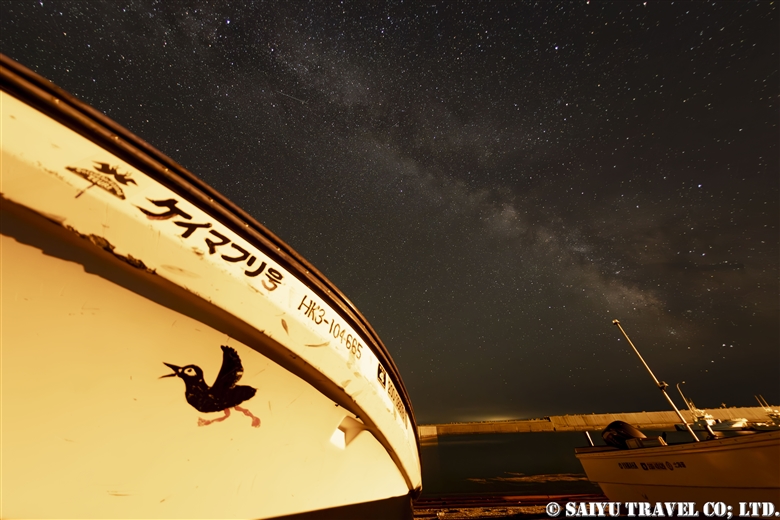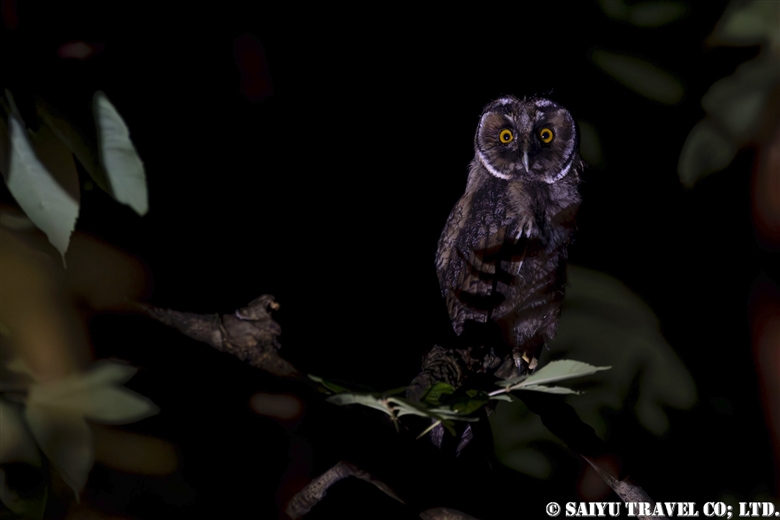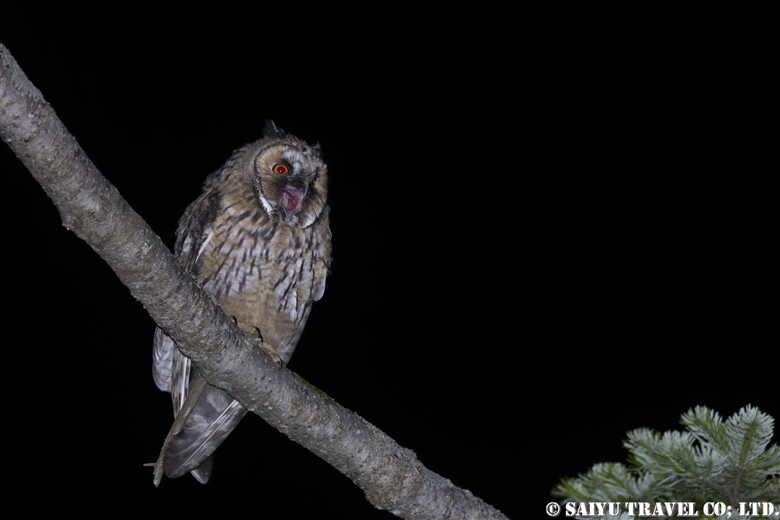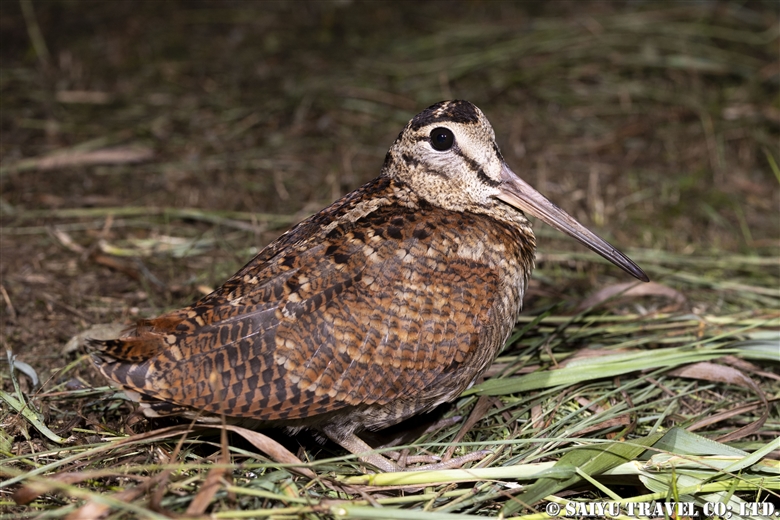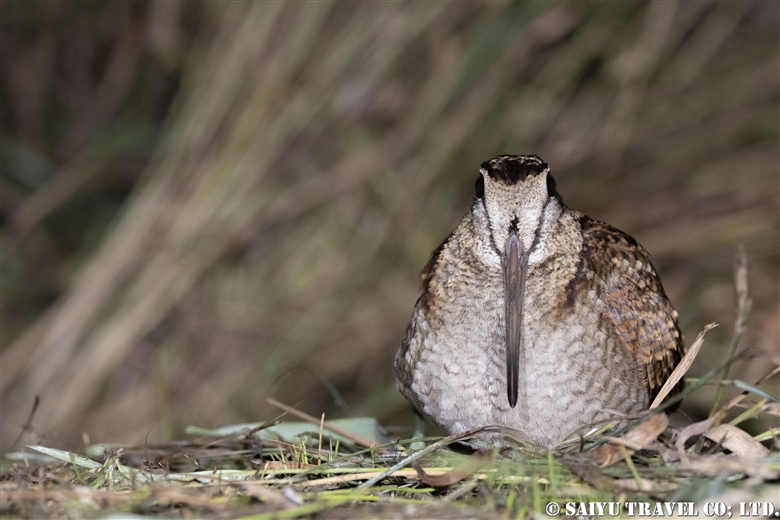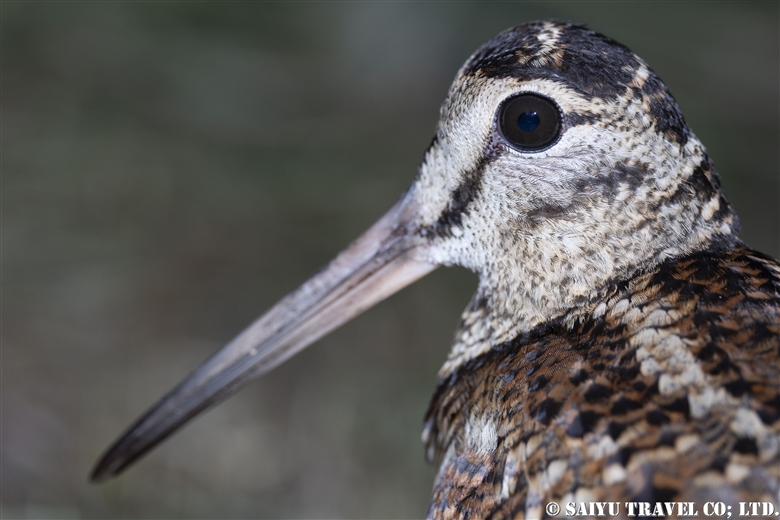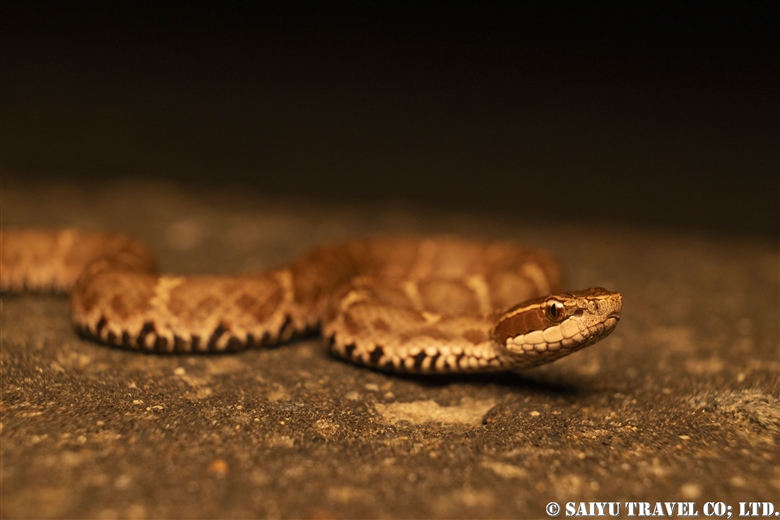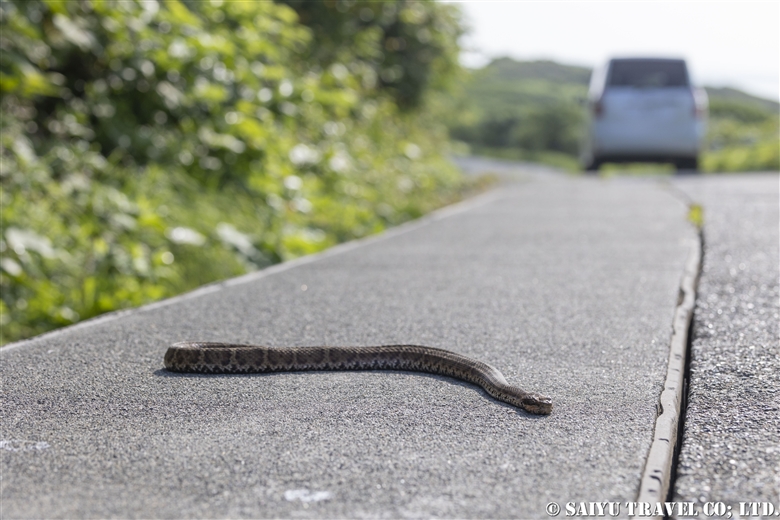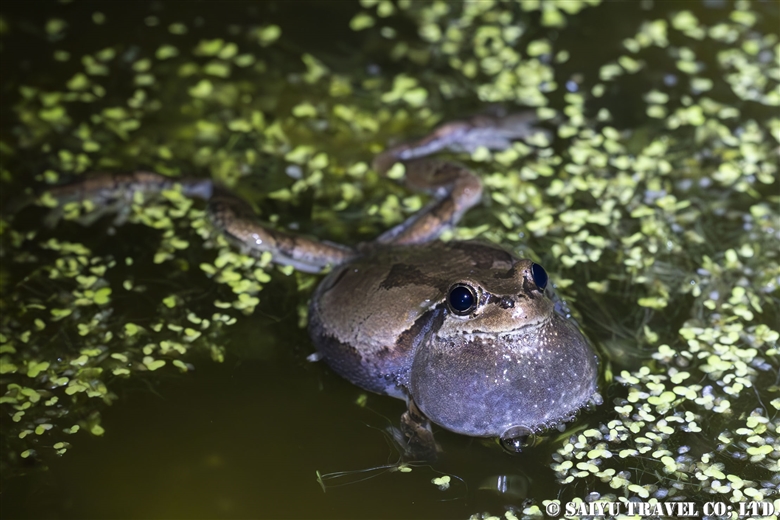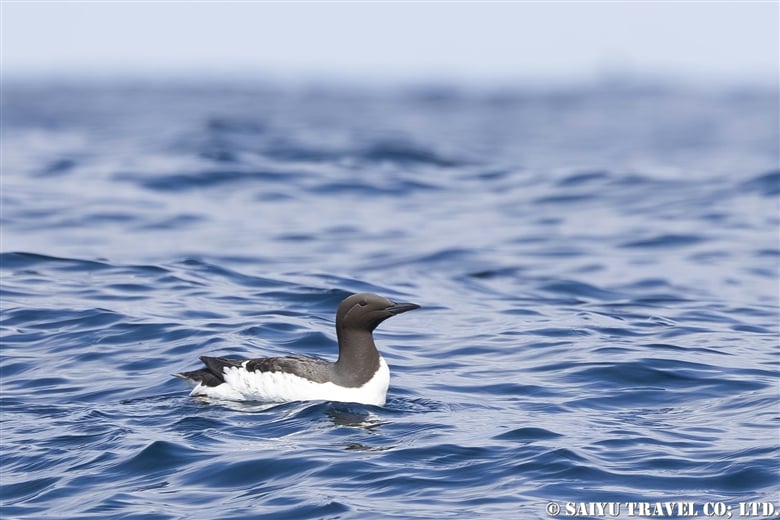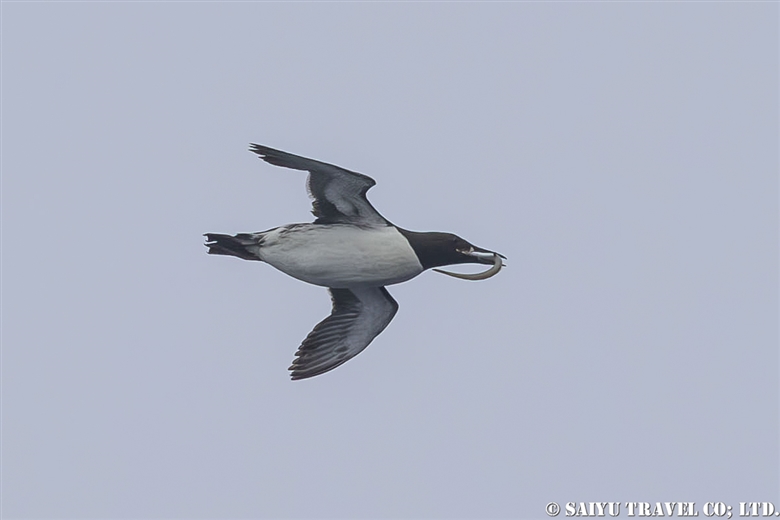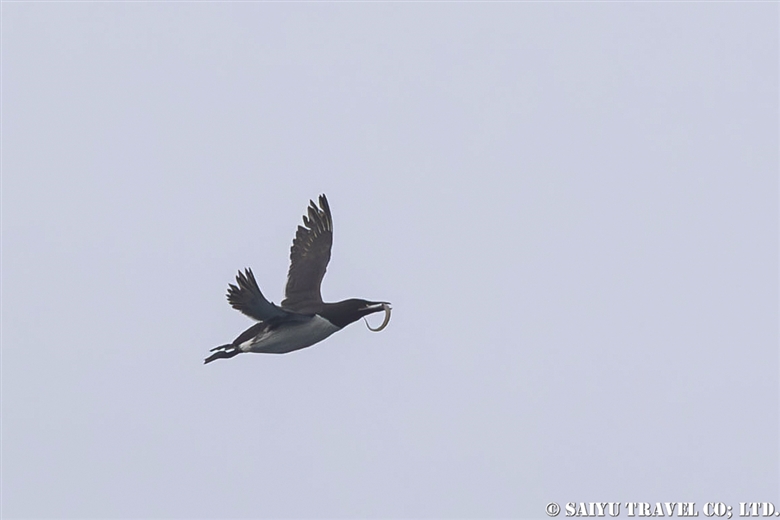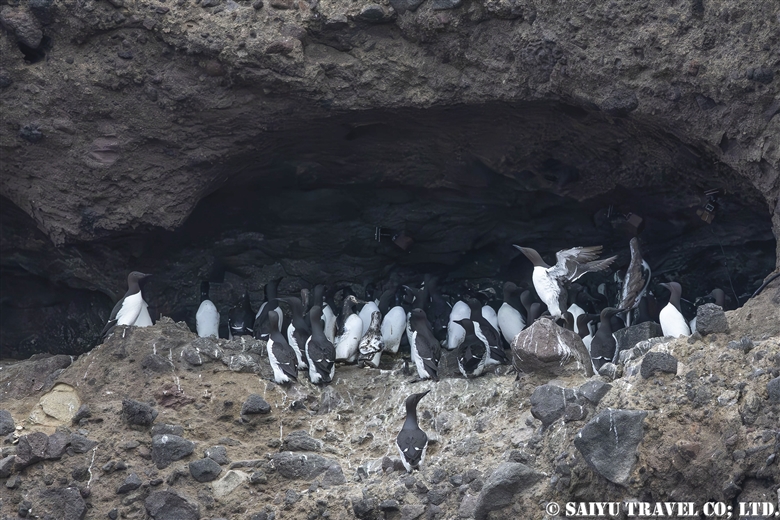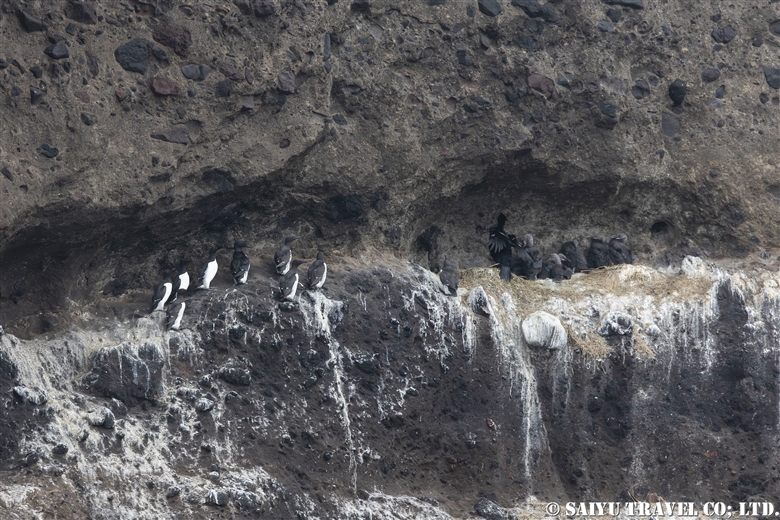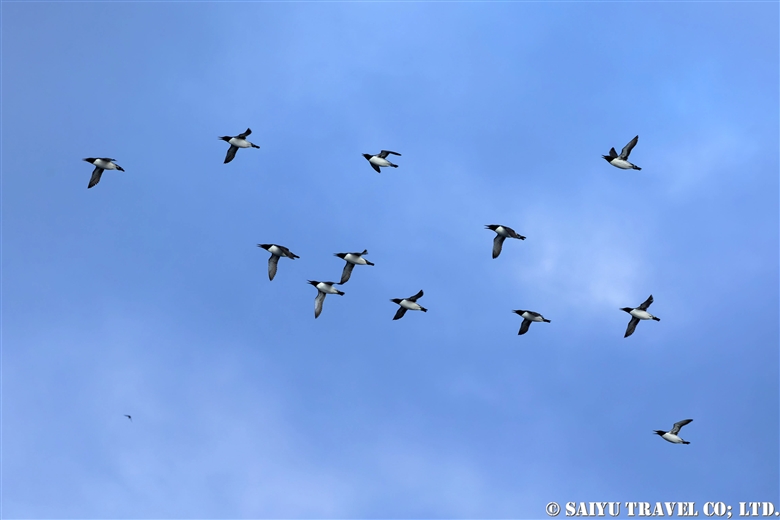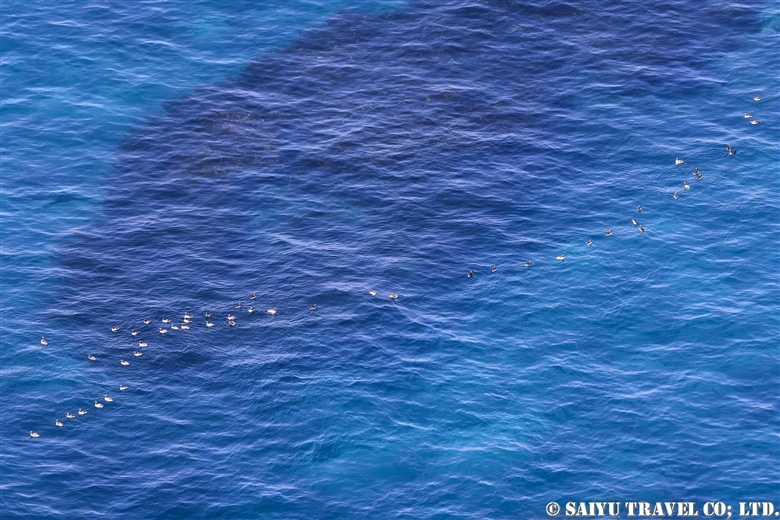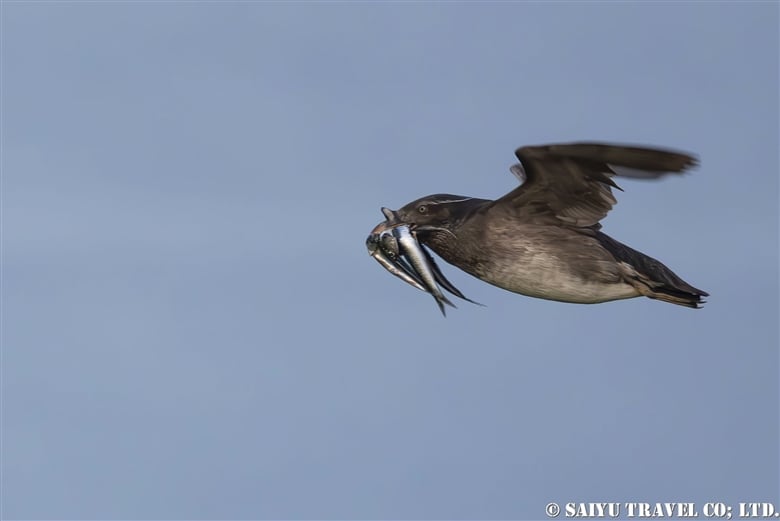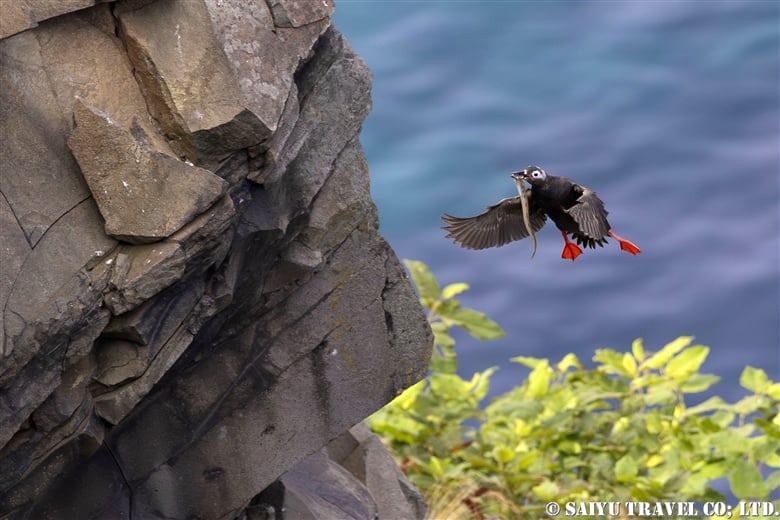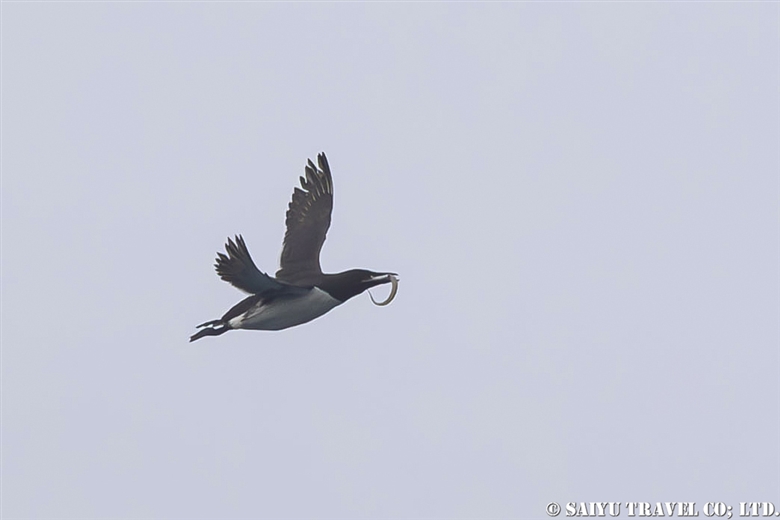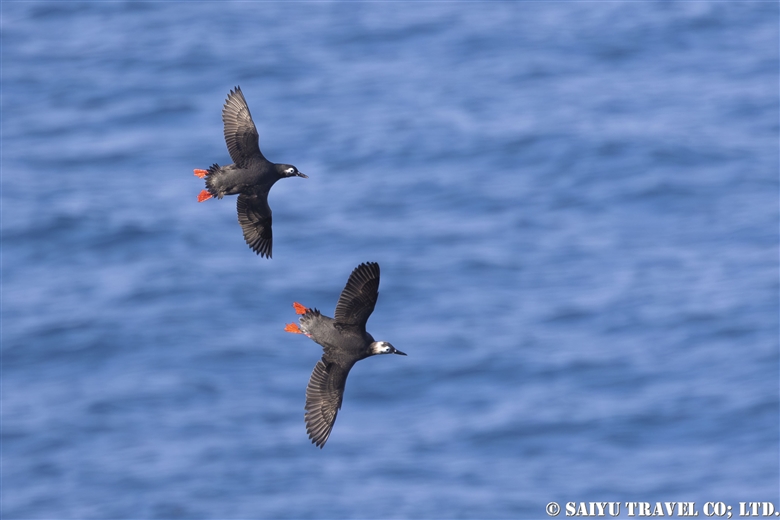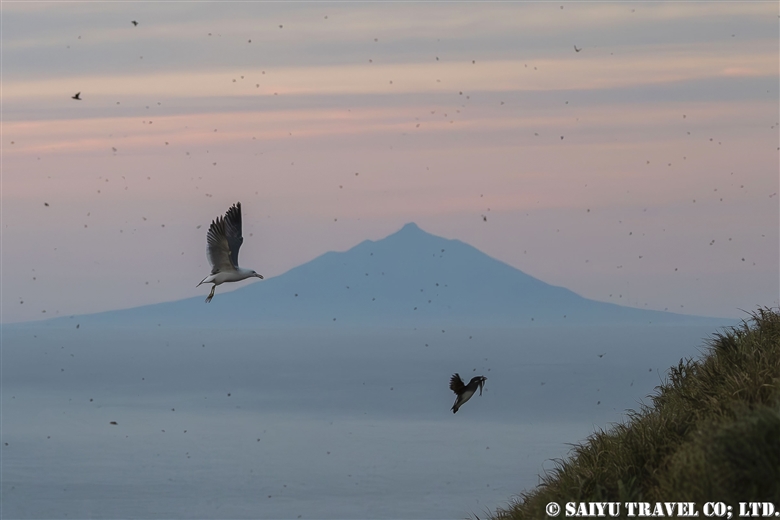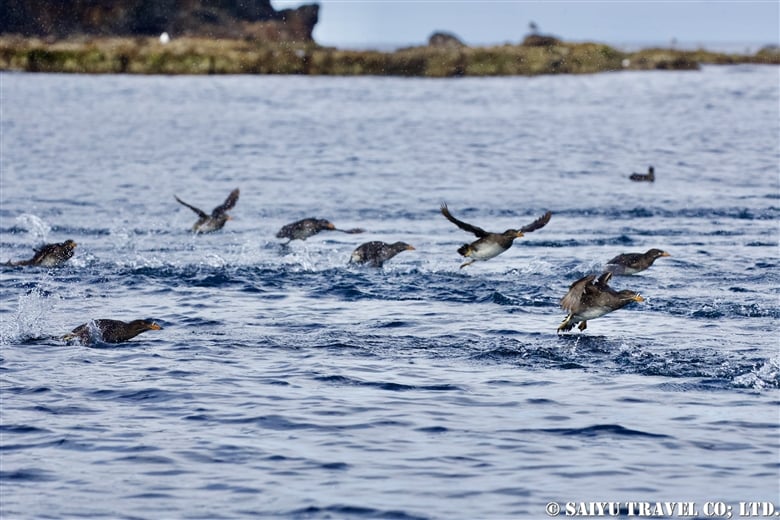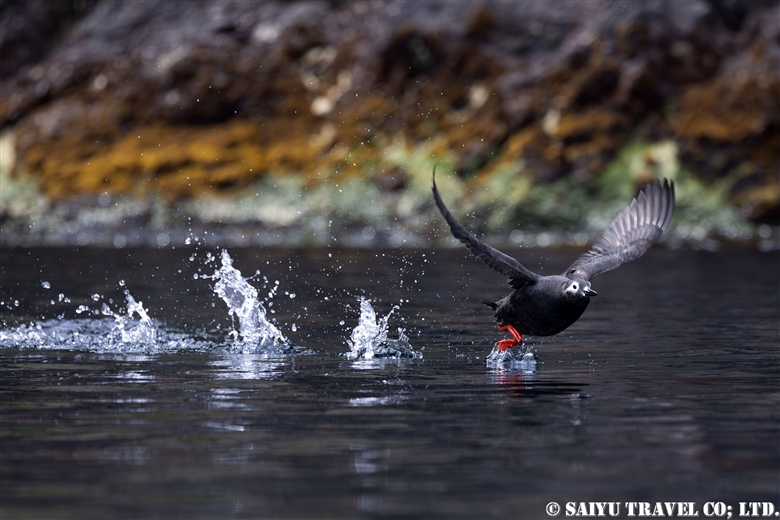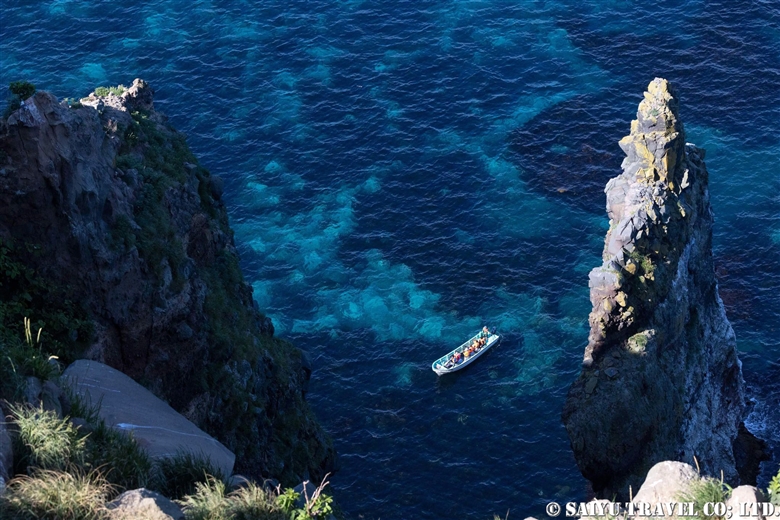
Many visitors come to Teuri Island in June to see the “Rhinoceros Auklet return to their nests,” but the breeding season begins in March. It is difficult to visit the Rhinoceros Auklet breeding grounds because there is still snow on the ground at that time, but here are some scenes from a visit in April.
>>Wildlife on Teuri Island in Spring and the First Herring Spawn in 70 Years
In late April, Rhinoceros Auklet nests were visible in the breeding area because the Giant knotweed had just sprouted. Therefore, it was possible to observe the Rhinoceros Auklet as they landed and entered their burrows when they return. Rhinoceros Auklet at this time of the year are incubating their eggs, so the return at night is for the parent birds to “take turns”. The parent bird that has been out at sea returns in the dark, and the other parent bird that has been holding the eggs all day goes out to sea for feeding. For this reason, the number of Rhinoceros Auklets seen during this period is less than during the chick-rearing period, but this is the only time of year when one can watch them slowly entering and leaving their nest holes before the Giant Knotweed covers them up. Moreover, as soon as the buds begin to sprout, the Giant knotweed grows day by day and covers the nest in no time at all.
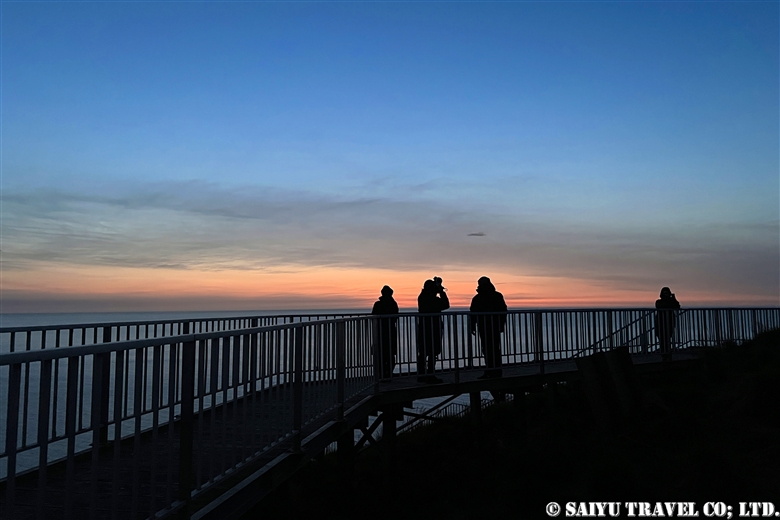
We will wait for Rhinoceros Auklet to return to their nests while viewing the evening scenery at the Red Rock Lookout.
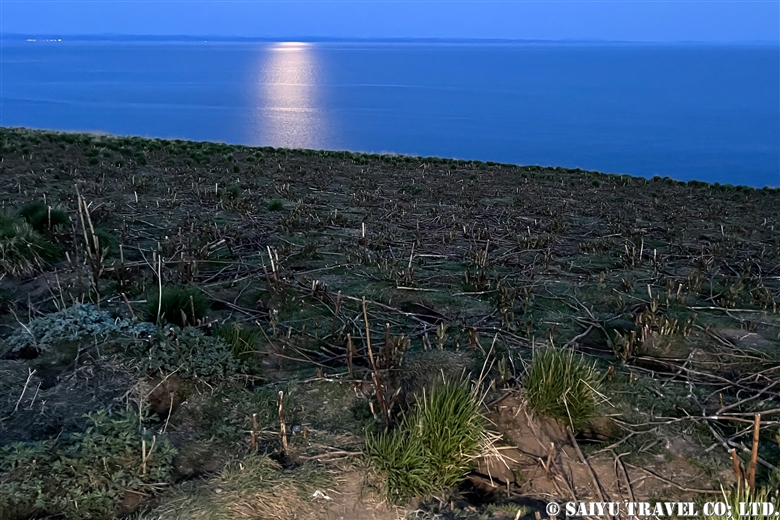
This is a Rhinoceros Auklet nesting site. The Giant knotweed appears to have been cut off at a certain height, which indicates the height of the snow cover that winter. Only the part that was buried in the snow remains, and the part that came out of the snow is gone due to the harsh winds. Thanks to this, Rhinoceros Auklet’s burrow is still clearly visible.
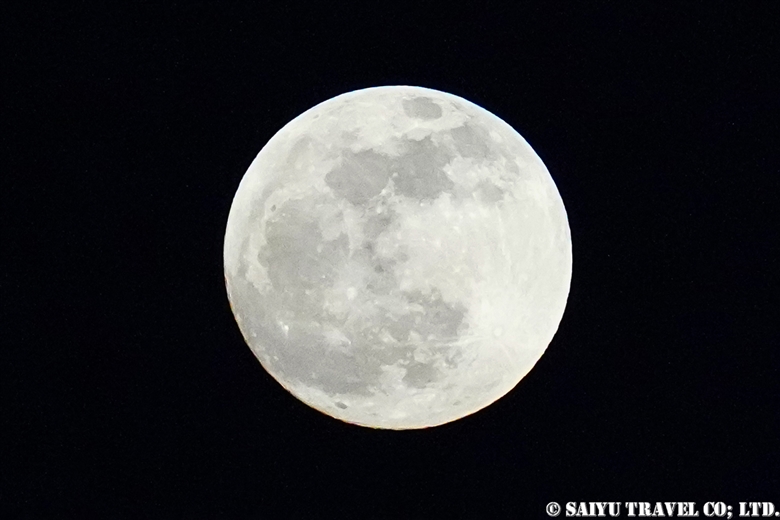
It was the night of the full moon. The full moon was very beautiful in the clear air of Teuri Island.
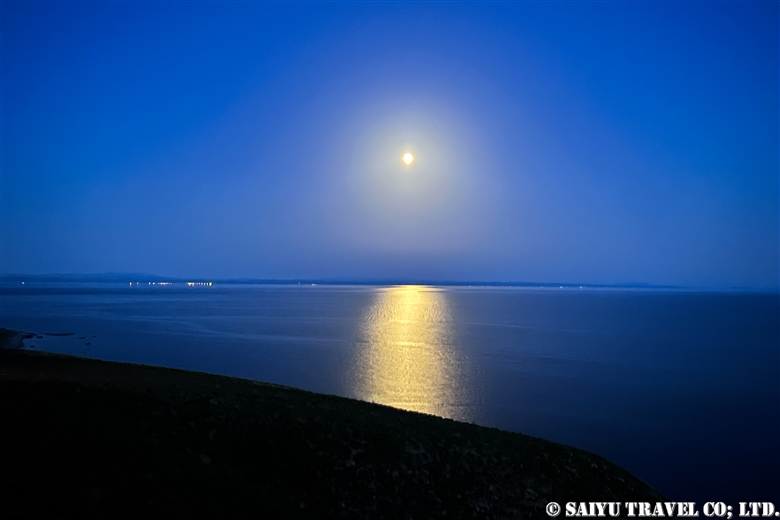
The moonlight created a “path of light” in the sea.
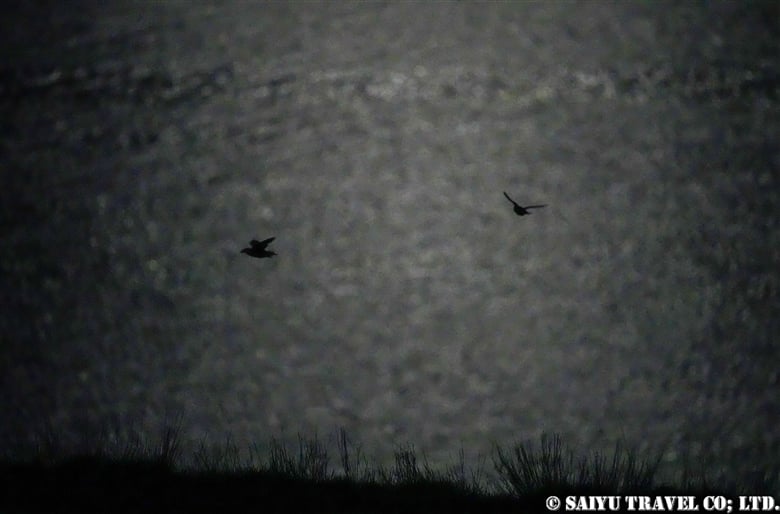
Rhinoceros Auklets have begun to return to their nests.
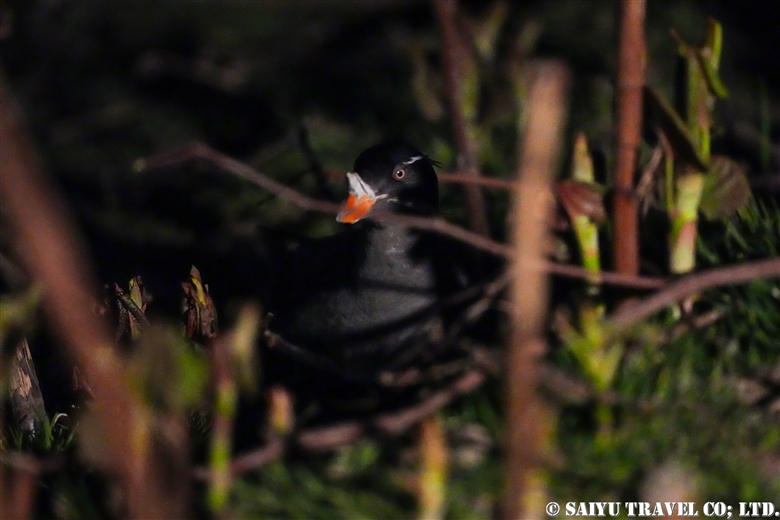
Rhinoceros Auklet may be watching us for a while after landing, but they do not immediately head for the nest hole. When the chicks are born, the parents return with food in their mouths and rush into the nest hole, so there is no time to observe them slowly. The chicks are hungry, and Rhinoceros Auklets that could not get any other food may take it away from them. So this is the one of the best time to observe them.
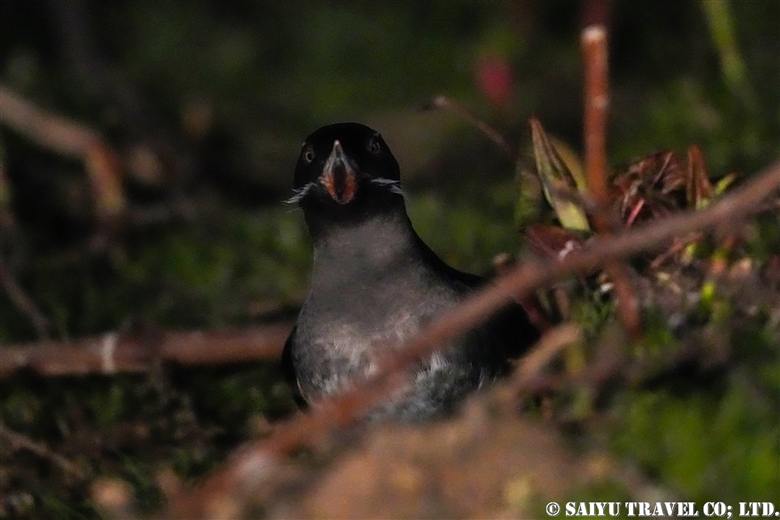
One individual whose nest hole was close to our observation area on the road was watching us and approaching us. Since the nest was under the road at our feet, it ran into the burrow at a high speed from the halfway point.
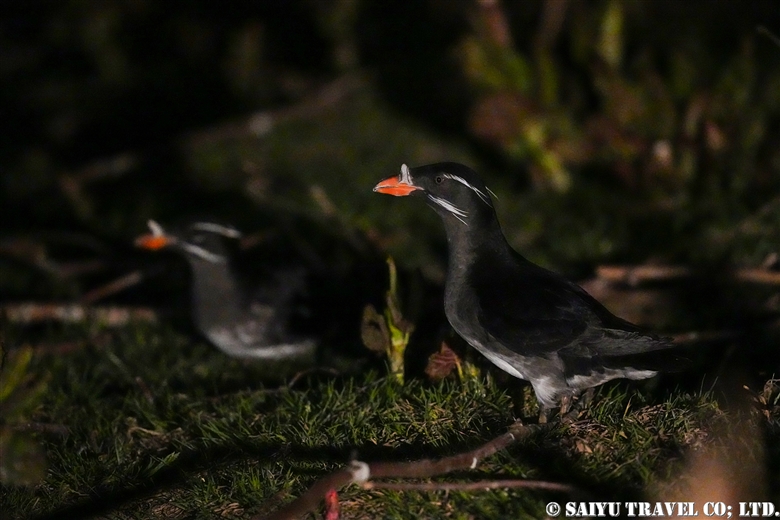
Some Rhinoceros Auklets do not enter their burrows immediately, but take their time.
If this is your second visit to Teuri Island, this is also a great time to visit. This is also the season when, if you are lucky, you may encounter “Herring Spawning” and migratory birds!
Image & text : Mariko SAWADA
Observation : April 2024, Teuri Island, Hokkaido
Image & text : Mariko SAWADA
Observation : April 2024, Teuri Island, Hokkaido
★ Visit our web site of TEURI ISLAND.
★Contact us to make arrangements for photographing seabirds on Teuri Island and Wildlife of Japan.
★Wildlife videos are also available on Youtube – we have the playlist as well.
Tags: Rhinoceros Auklet, #rhinocerosauklet, #seabirds, Teuri, Wildlife of Hokkaido, ウトウ, Wildlife of Japan, Utou, Birds of Hokkaido, Saiyu Travel, Birds of Japan, Sea birds, Wildlife tour of Japan, #birdsofjapan, Birds Photography of Japan, #teuriisland, Teuri Island Naturelive, Teuri Island, #teuri.jp




